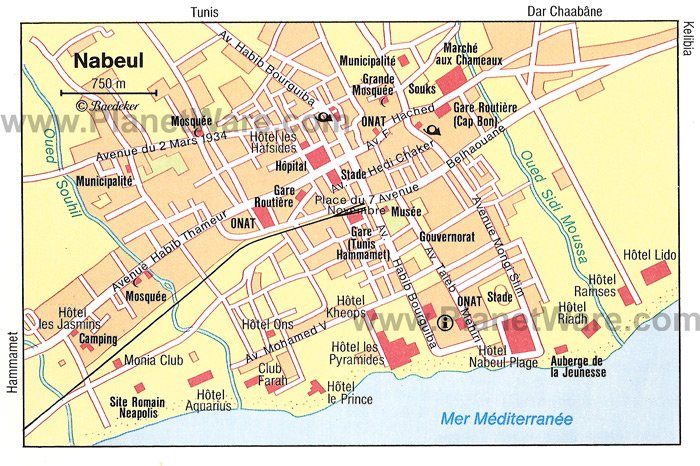
Nabeul is the capital of pottery and ceramics in Tunisia. Tourists can come and watch how pottery is made, as the potter’s wheel spins to form exceptional pottery.
Nabeul may strike others as a rather messy place, but there’s no denying how interesting it is as a tourist attraction. There are lots of places to visit and sights to behold in this city located at the east of Hammamet. One of the major destinations in Nabeul is the Archaeological Museum. An easily accessible and superbly designed structure, the Archaeological Museum features a vast collection of potteries and clay. The museum has rooms designated only to artifacts of the Punic Period (7th to 4th century B.C.). Aside from pottery, the museum also houses collections of jewelries, oil lamps, and coins. This is where the relics of artifacts of the Roman period (2nd to 4th centuries A.D.) are found as well. Visitors will also marvel at the two clay monuments, dubbed Baal Hammon and Tanit, which are said to be owned by the goddesses of Carthage.
Kerkouane, the origin of the items displayed in the Archeological Museum, is also a famous site for sightseeing.
Within Nabuel lies a village known for stone carving—Dar Chaabane. This craftsmen’s village produces most of the artworks in windows and doorways all over the country.
Another most recommended tourist spot in Nabeul is the Place du 7 Novembre, which is lined with all sorts of restaurants, banks, and shops. Souvenir shops run aplenty in the city; most of them sell embroidery, mats, ceramic goods, woven rugs, and of course, pottery.
No visit in Nabeul is complete without participating in the orange blossom festival held in April every year. Nabeul also hosts a Friday market where a variety of Tunisia’s local products is traded.

Nabeul

No comments:
Post a Comment
Feel free to place you thoughts here